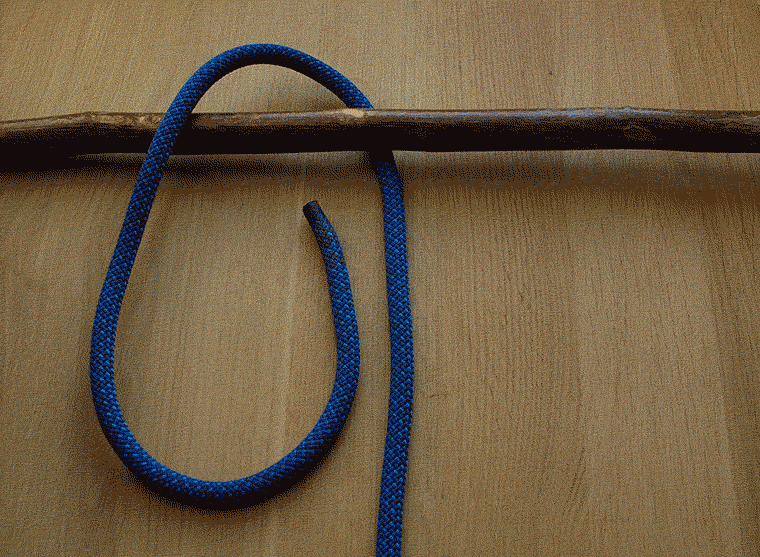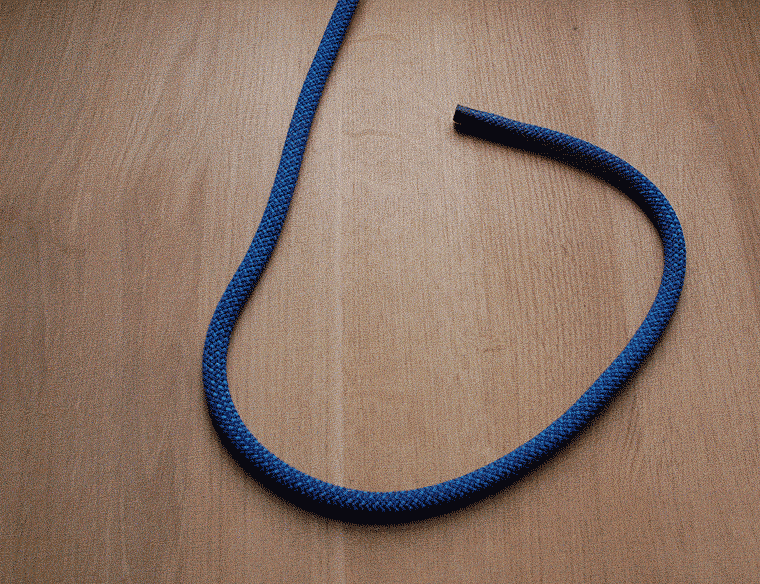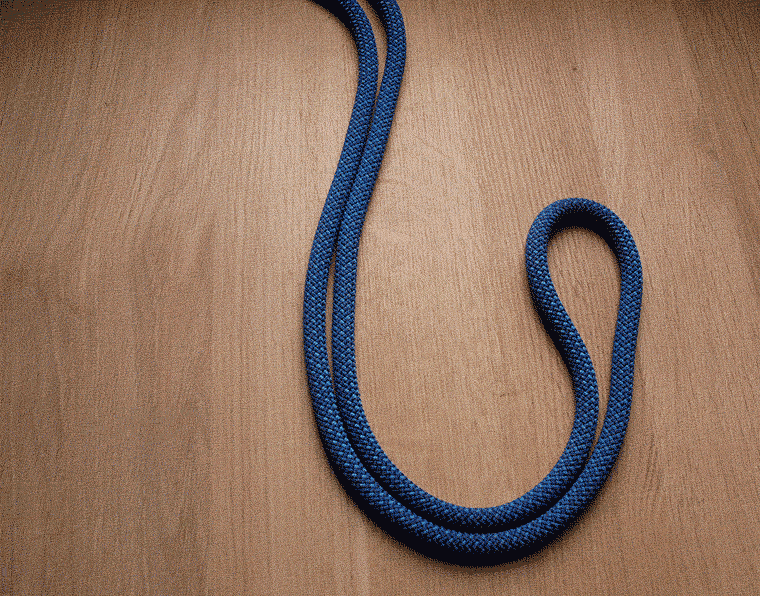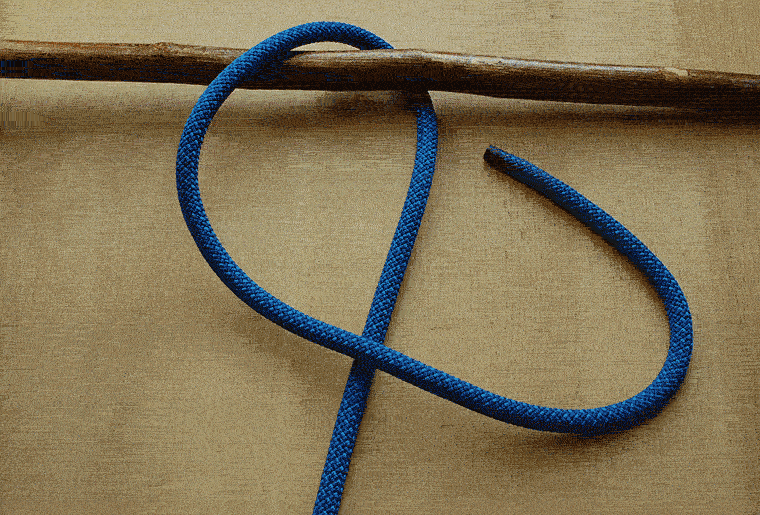My early teens as a Girl Guide taught me a great deal about the outdoor world and instilled in me a love for camping and spending time in the wilderness. Camping every other weekend through the summer gave me the perfect platform to learn and use a load of complicated, and actually really useful, camping knots. Since then, there has been an explosion of gadgets and gizmos for seemingly every possible scenario when a knot would have done just as well. So, sadly many of the basic camping knots, that seemed so essential in the days of thick canvas tents and wooden tent pegs, have dwindled into little more than a distant memory for many of us.
However, every true camper needs a couple of rope tying tricks up their sleeves, and would be lost without the knowledge of how to tie at least a couple of the more simple knots.
- How to tie a reef or square knot
- How to tie a sheet bend
- How to tie a round turn and two half hitches
- How to tie a bowline knot
- How to tie a double figure of 8 knot
- How to tie a taut line hitch
Maybe you just need a little reminder of which rope goes under and which rope goes over. Or perhaps you’re learning these essential camping knots for the first time. Either way, once you’ve practiced them and used them out at camp, you’ll start to wonder how you ever lived without them. Then it will be time to start learning some of the more complex knots, which will open up a whole other world of camp craft creativity.
Different types of camping knots
Before you get onto the fun stuff, it’s useful to know a few things about the different types of knots you’ll be learning. There are hundreds of cool knots out there, all with different names and variations of the original version. Usefully, most of the knots are described in their name, and so if you know a few basic terms, you’re more likely to understand what they are used for, how and why.
The knot
A knot is used to tie a rope to itself. Tying your boot laces or doing up your necktie are both good examples of knots we use every day.
The hitch
A hitch is used to tie a rope to another object; like tying a washing line to a tree or securing your dogs’ lead to a post.
The bend
A bend is used when tying together two different pieces of rope. Not often used in everyday scenarios, unless you need to make a swift getaway out of an upstairs window; bend will allow you to tie two sheets together for a safe descent! (Not recommended).
For more examples of different types of knots, read our essential climbing knots article.
Common uses for camping knots
Knowing a few basic knots for camping will enable you to secure tarps and shelters, fasten guy lines on tents, tie down gear on the car and fix up lines for drying washing or hanging lanterns.
However, they will also equip you with the ability to mend things that break, or to adjust things to the conditions: a tent pole that has snapped in high winds can be lashed together for a temporary fix, guy lines that need securing to a more solid stake can be lengthened.
And then there is the ability to create cool stuff with your newly learned knots; a tripod for a washing up bowl or a drying rack for your camping cookets.

Rope for camping
Along with the knowledge of what camping knots to use and what camping knots not to use, you will also need to make sure that camping rope is on your checklist. It’s a good idea to have a few different types of rope in your gear bag as you never know what you might need it for. For some things, a simple ball of string will do just fine. This breakdown will help you figure out the different types of rope that are available.
Essential camping knots
So, now to the fun stuff! Here are six essential knots for camping that I use all the time, some of which have gotten me out of a tricky pickle on more than one occasion:

Reef knot or square knot
Used to: tie two ends of a rope together
Notes: not to be used under tension as it will slip
Difficulty rating: easy
Uses at camp:
tie up a bundle of wood
extend the length of a washing line by tying two ropes together
tie up a bandage

Sheet bend
Used to: tie two ropes together that are different sizes or thicknesses
Notes: the thicker rope must be used as the bight with the thinner rope tying around it – as shown
Difficulty rating: medium
Uses at camp:
lengthen a guy line by adding a spare bit of rope or string to the end
fix snapped boot laces by adding whatever bit of string or cord you can get hold of

Round turn and two half hitches
Used to: secure a rope in a variety of situations – a good all round hitch that is strong and doesn’t slip
Notes: easy to untie even after being subject to a heavy load
Difficulty rating: easy
Uses at camp:
tie a washing line to a tree
tie a load to the roof rack of your car

Bowline knot
Used to: tie a loop in the end of a line
Notes: a secure knot that doesn’t slip when it is loaded but will untie easily when not loaded
Difficulty rating: medium
Uses at camp:
tie a bear bag from the loop at the end of a hanging rope
thread the other end of the rope through the loop and tie off to secure a load on the a car
Double figure of eight knot
Used to: create a loop in the end or middle of a rope
Notes: it is easy to identify if done incorrectly and is a strong knot that tightens with a load
Difficulty rating: easy
Uses at camp:
create a line with multiple loops to hang lanterns on
tow a car out of the mud (only for use with a rope that is strong enough for the job!)
Taut line hitch
Used to: create an adjustable knot that can slide back and forth along a line
Notes: it is a secure knot as long as there is tension
Difficulty rating: medium
Uses at camp:
use as a guy line on a tarp when high tension is required
replace a tent guy line
Fun camping knots
Once you have mastered the best knots for camping and have understood their importance in your camp skill tool kit, you can start branching out and start learning how to make cool things for your campsite using these newly learned camping knots. Check out these ideas for things to try. The kids will love them and they’ll be kept busy for hours!
If you’ve loved learning these and you’re in need of some more knots to get tangled up in, try out these climbing knots.





